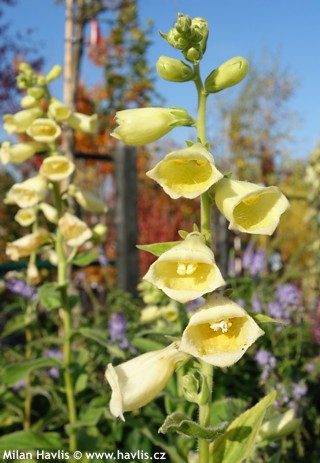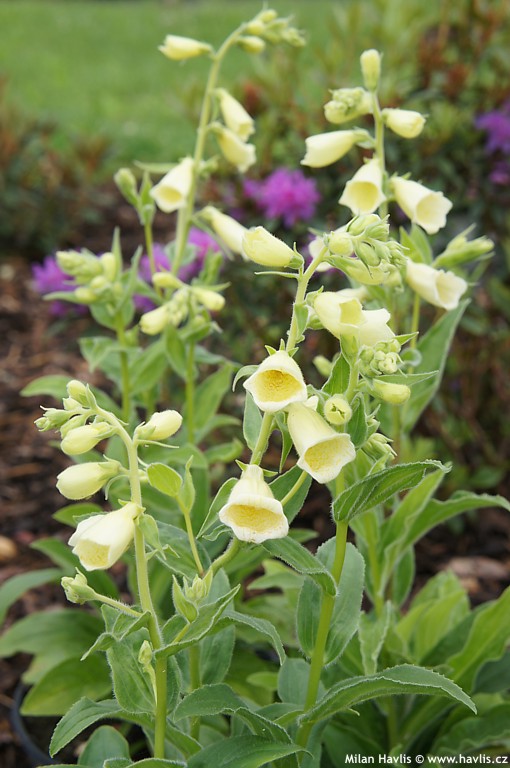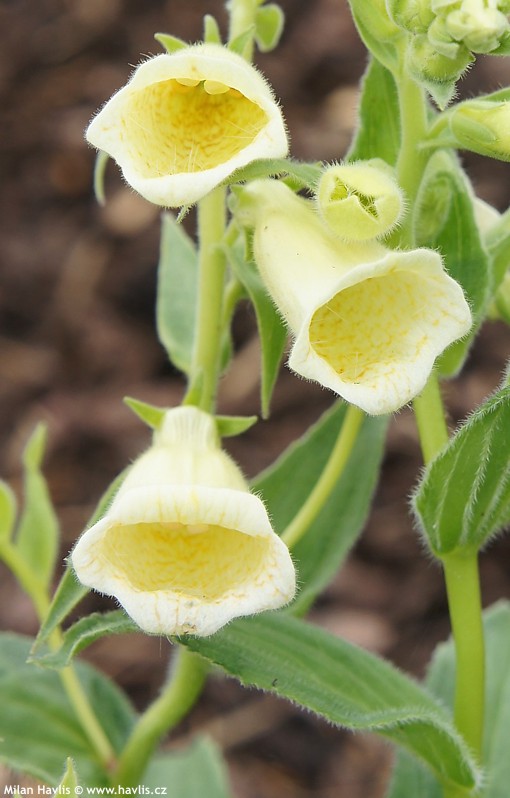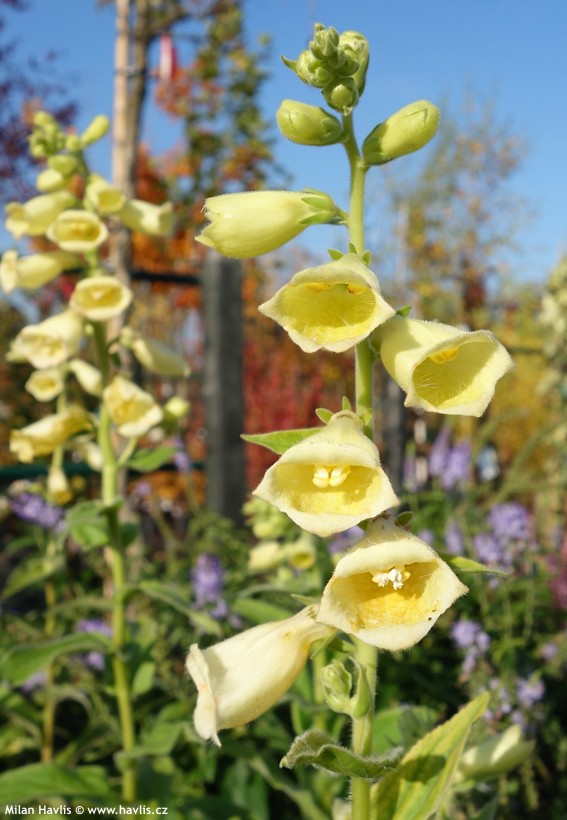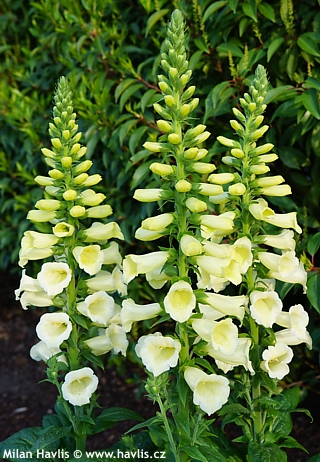Digitalis grandiflora 'CREME BELL' yellow foxglove
size/type
mid-sized perennial,mid-sized perennial
usual height
0,4-0,6m
usual width
0,3-0,5m
leaves
deciduous broadleaf
colour of leaves
flowers
showy
colour of flowers
blooming time
June-July
location
full to partial sun
USDA zone (lowest)
4 (down to -34°C)
winter protection
for zone 5+6

for zone 7

categorized
Description of the plant:
Yellow foxglove finds its home in Centrals and South Europe. Its Latin name refers to large flowers which is a bit overrated seeing so many hybrids especially of common foxglove with much larger flowers. Still, compared with most other wild species, yellow foxglove deserves this name. And talking of names, this variety is even trickier. The correct name is Creme Bell but is often misspelled, mostly deliberately, in a French way Créme Belle (lovely cream), and even though it is a mistake it fits nonetheless. Simply because the flowers look like glass bowled from the sweetest cream of soft vanilla colour, or a small scoop of lemon sorbet. They are wide funnel-shaped and decorated with deep orange and brown specs in the throat. Individual flowers are well spaced and open one by one up along the stem from June until midsummer.
Leaves are broadly elliptic to ovate, grass green, slightly hairy, and have prominent veins. However delicious and sweet our description of the flowers may sound foxglove is a toxic plant, and despite the fact that it doesn’t make any fruit-like berries that would attract children it is not recommended for mass plantings near playgrounds, school yards, or kindergartens.
Foxglove will grow in almost any soil apart from too wet or too dry. In the wild it is found in humus-rich soils in light woods and its margins, which means that it will love partial shade in your garden, or full sun if kept moist. Excess fertilizing may cause profusion of leaves at the cost of flowers. Hardy to about -34°C (USDA zone 4).
Last update 04-01-2014.
QUICK PRICE OVERVIEW
CURRENTLY SOLD OUT
WANT TO TRY A SIMILAR PLANT?












